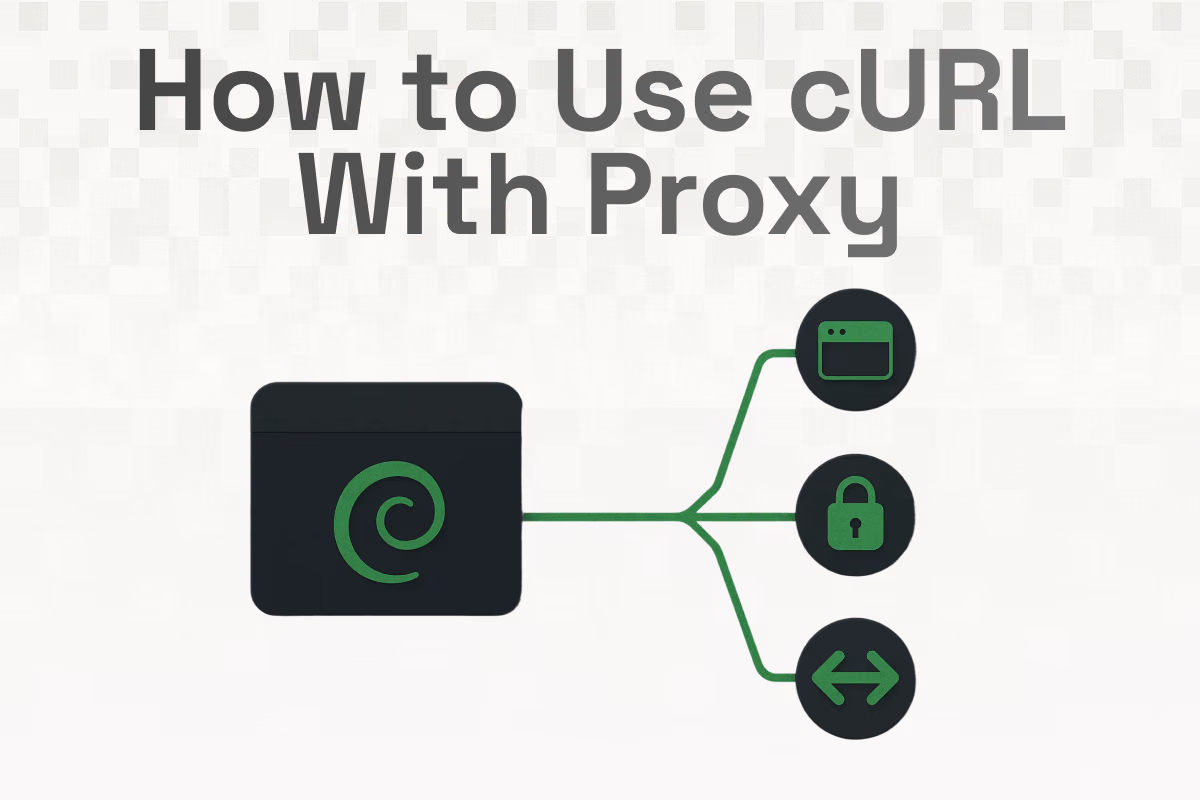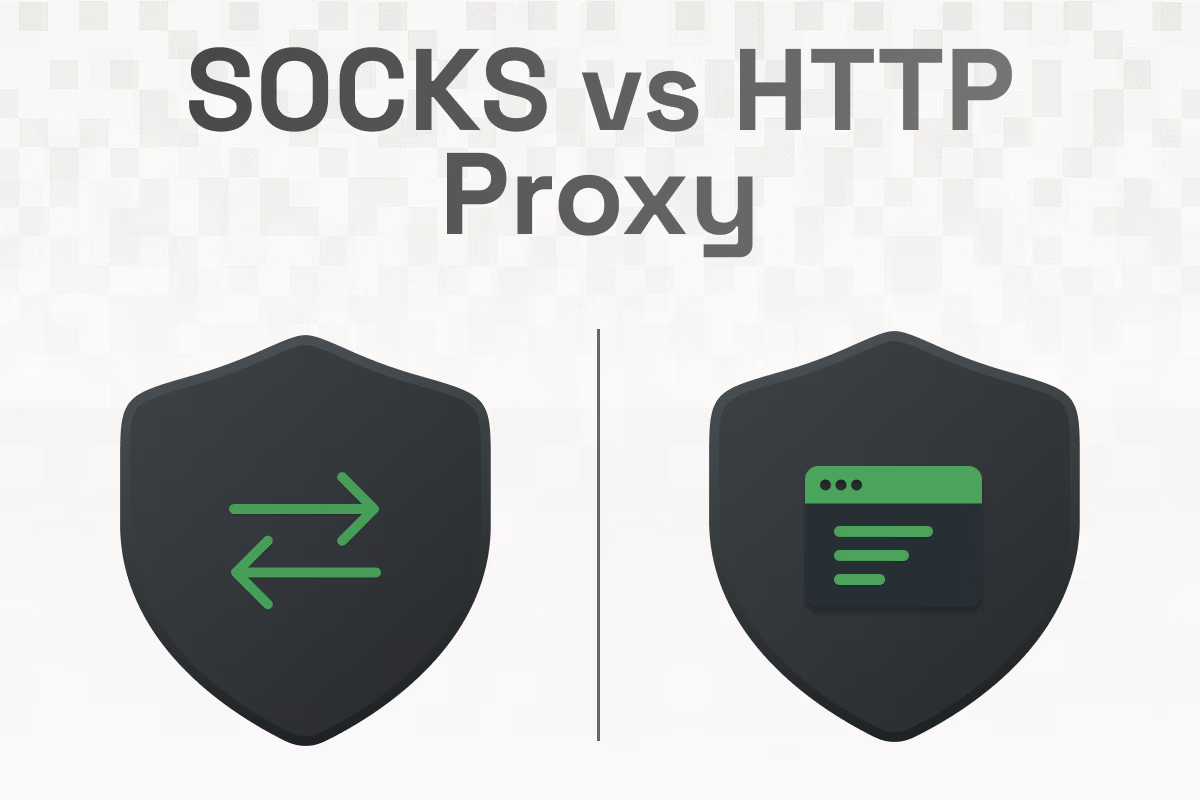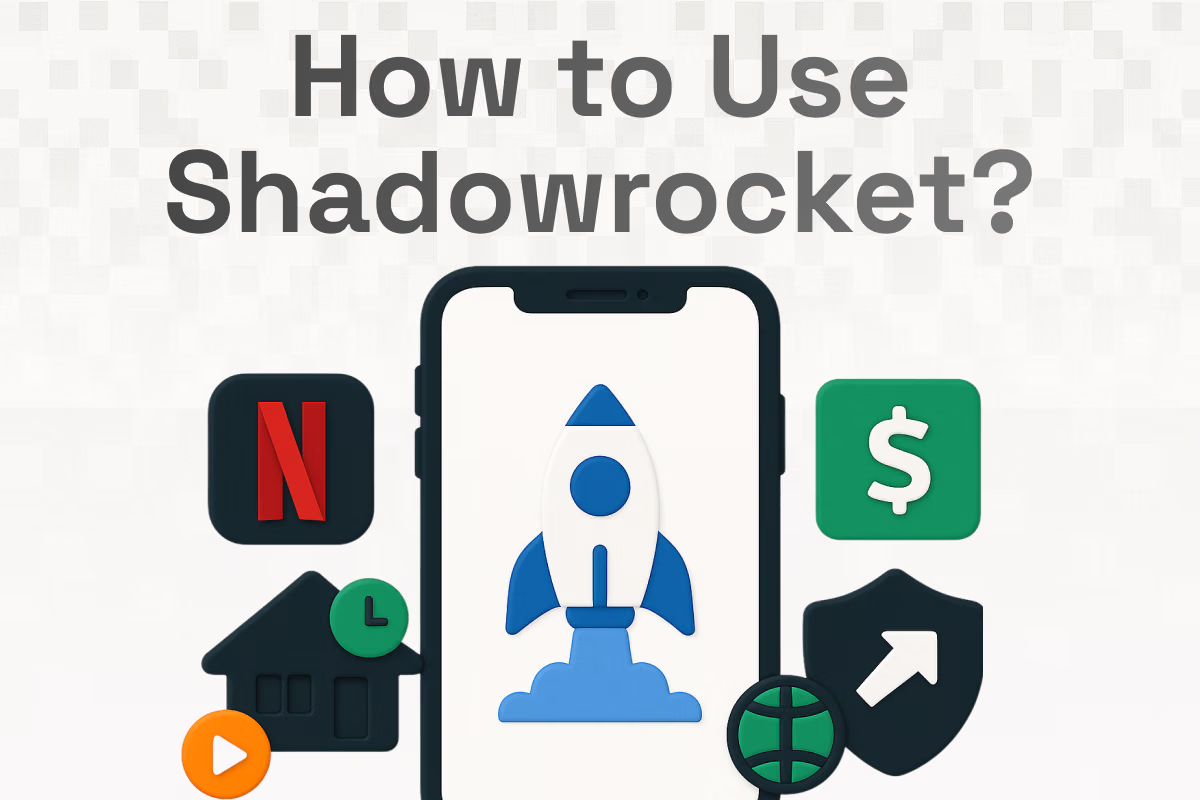Table of Contents
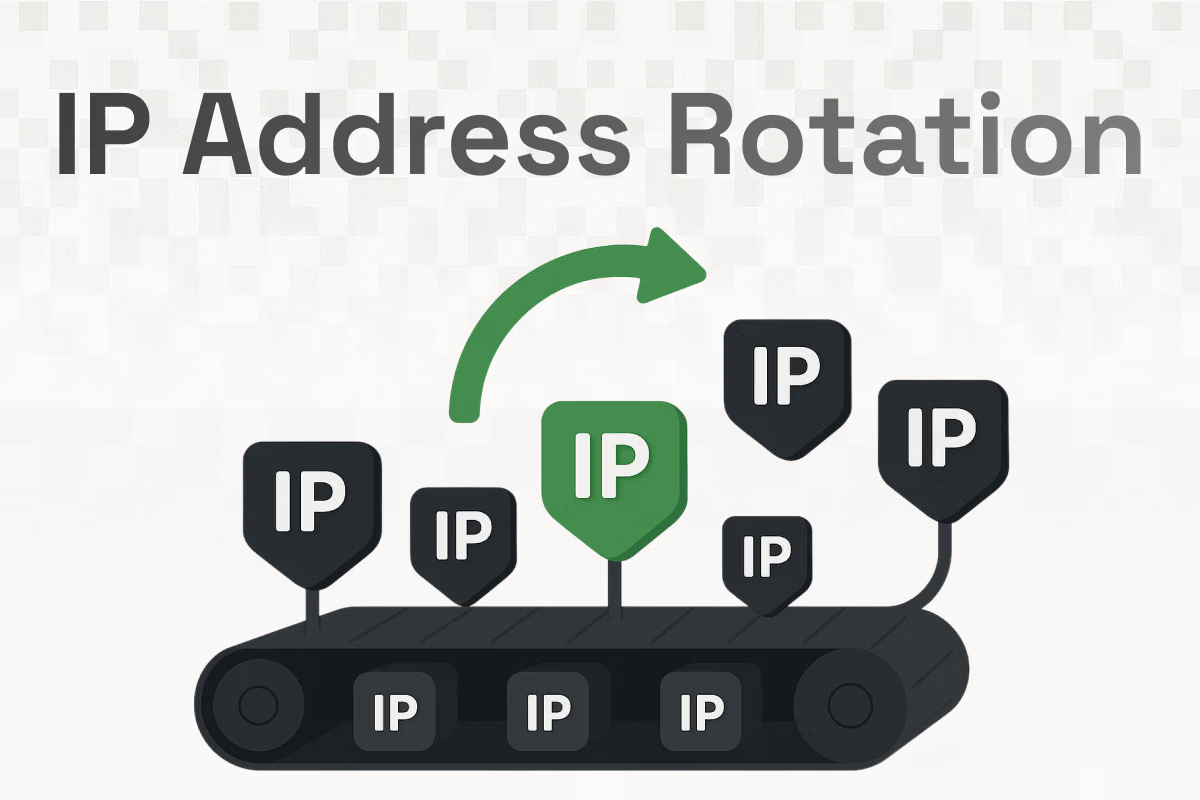
Every device connected to the internet uses an IP address. That address is how servers recognize you, count your requests, decide what you are allowed to see, and in many cases whether to slow you down or block you outright. If you are collecting data at scale, testing localized user experiences, running multi account operations, or simply trying to protect your privacy, a single static IP becomes a bottleneck. The practical fix is IP address rotation.
IP address rotation is the practice of changing the IP you present to remote servers on a schedule or by event. Instead of sending a thousand requests from one address, you distribute them across a pool.
This reduces the risk of bans, avoids strict per IP rate limits, and gives you tools to control how consistent each session appears. Most organizations achieve this through rotating proxy networks, which can assign a different IP per request or keep a “sticky” IP for a short time before switching. Providers like Floxy expose this behavior through simple endpoints and configuration strings, so your code or browser can benefit without reinventing network plumbing.
Below, we cover what IP rotation is, why it matters, how to do it manually and programmatically, how rotation types differ, how rotating IPs compare with static ones, how to evaluate providers, and what are the risks and best practices when utilizing IP rotation.
What Is IP Rotation?
IP rotation means your outbound requests appear to come from different IP addresses over time. You can rotate on two main axes:
- Time based, where a single IP persists for a short period, then changes.
- Event based, where IP changes on each HTTP request or on each new session.
Rotation can be implemented with your own infrastructure, but the most common path is to use a managed proxy network. A rotating proxy gateway accepts your request and forwards it through one of many available IPs.
The gateway decides which IP to use next, according to the rotation mode you select. Large networks offer residential IPs that belong to consumer devices, mobile IPs that egress through cellular networks, ISP sourced static addresses for stability with residential trust, and datacenter IPs optimized for speed. These categories behave differently in terms of cost, block rate, and performance.
Rotating proxies are often paired with sticky sessions. A sticky session deliberately keeps the same IP for minutes or hours so multi step flows see continuity. After the TTL expires, the network assigns a fresh IP. Think of sticky as a short lived static IP that you can programmatically end.
Why Rotate Your IP Address?
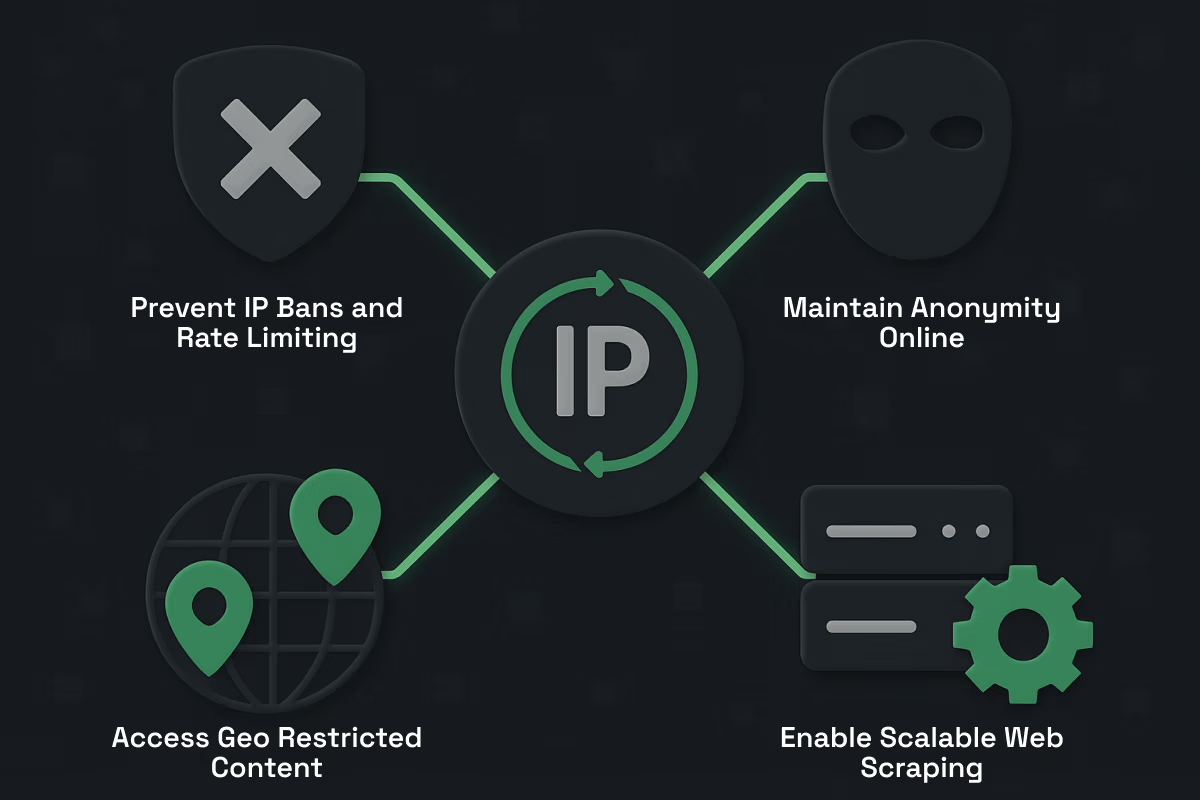
Here are the most common reasons why rotating your IP address is a good practice.
Prevent IP Bans and Rate Limiting
Websites and APIs track abusive patterns per IP. If you hammer an endpoint from one address, expect throttling or a block. Rotation spreads requests across many IPs, which reduces per IP traffic and lowers the chance of hard bans. Combined with smart pacing and header rotation, this improves reliability for scrapers, testers, and automation.
Maintain Anonymity Online
If you do not want sites to build a coherent picture of your activity, rotating IPs increases entropy. Privacy is never just one control, but pairing rotation with good operational hygiene limits simple IP based tracking. Tor can even change exit nodes on demand through the control port. Developers commonly use the Stem library to send a NEWNYM signal and force a fresh circuit, which yields a new egress IP. This is slower than paid proxy pools, but it demonstrates the principle clearly.
Access Geo Restricted Content
Content verification, search result QA, ad creative checks, and price comparison often require seeing what users see in many countries. Geo targeting plus rotation lets you test many locales without repeated blocks.
Enable Scalable Web Scraping
At scale, rotation is not optional. Scraping frameworks provide middleware and recipes for per request proxy switching, load balanced pools, and failure recovery. Various packages around Scrapy and Python Requests illustrate both custom rotation lists and gateway based rotation, where the provider handles the heavy lifting and you focus on extraction.
How to Rotate IP Address: Methods and Tools
There is more than one way to rotate. The right choice depends on volume, budget, required continuity, and technical stack.
Manually Using Different Networks
The lowest friction approach is to change networks. Restart your ISP router to receive a fresh dynamic IP. Switch from Wi Fi to cellular data. Use a different Wi Fi network altogether. This is fine for human browsing or small batch tasks, but it does not scale for automation and it provides no guarantees about geography or persistence.
Use of Rotating Proxy Services
For automation, a rotating proxy gateway is the most practical option. You configure one proxy host and port, then let the provider present a new IP per request or per session. Providers offer residential, datacenter, mobile, and ISP categories, with both rotation and sticky options. You can usually choose a country, sometimes a state or city, and in mobile scenarios even select the ASN to stay within a specific carrier.
Using Rotating IP Address Software
You also have desktop and browser tools that help orchestrate rotation in day to day operations:
- FoxyProxy is a mature extension for Chrome and Firefox that lets you create multiple proxy profiles and rules to switch based on URL patterns. It is not a proxy pool on its own, but it can point to backconnect rotating gateways or let you swap among profiles fast.
- Proxy SwitchyOmega is a Chrome extension that simplifies managing and switching multiple proxies. Like FoxyProxy, it is ideal for working with vendor gateways or rotating lists. New Manifest V3 builds exist to keep it current.
- Proxifier is a desktop client that routes any app through a proxy and supports proxy chains with load balancing. This enables basic rotation across a static list, which is useful if you control many individual endpoints. Pair it with vendor issued lists or with your own IP inventory.
- Anti detect browsers like GoLogin, AdsPower, and Kameleo manage per profile fingerprints and integrate with proxies. They streamline switching or programmatically triggering a new IP for a profile while maintaining device level consistency for sessions. They are not the proxy network but they automate rotation events tied to browser profiles.
- Tor with Stem lets developers rotate exit nodes by sending NEWNYM through the control port. This is educational and occasionally useful for low stakes tasks. For production scraping, commercial pools will be faster and more stable.
For bots and scripts, you can embed rotation at the code level:
- Python Requests can mount a rotating gateway or iterate a list. There are maintained recipes and guides for randomizing proxies, handling retries, and using async clients like aiohttp for high concurrency.
- Scrapy has a popular middleware ecosystem that rotates proxies per request and throttles crawls to reduce bans. You can also plug in a gateway so the rotation becomes a managed service.
- Puppeteer and Playwright support per browser or per page proxies. You can rotate via a gateway, switch proxy credentials between navigations, or use helper libraries like proxy-chain.
Types of IP Address Rotation
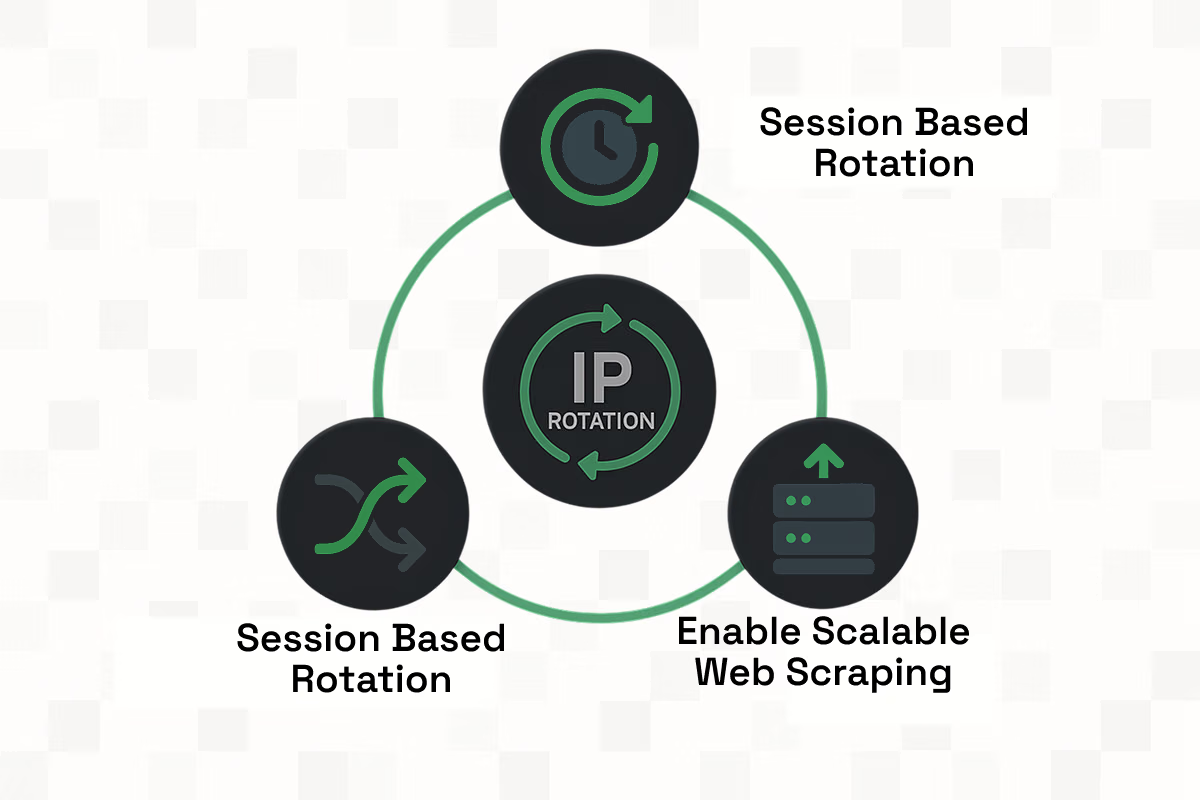
Session Based Rotation
A single IP is assigned for a session, then replaced after a fixed TTL or when you specify a new session ID. This is ideal when you log in, add items to a cart, or complete a multi step form that should all appear from the same user. Providers typically let you set the TTL in minutes or seconds depending on proxy type.
Request Based Rotation
Each HTTP request uses a different IP. This maximizes distribution and minimizes pattern detection at the expense of continuity. Request based rotation is the default for many residential backconnect gateways and is the common choice for large volume scraping.
Sticky IP Sessions
Sticky sessions hold the same IP for a short, configurable period before rotating. This gives you continuity for workflows that require it, but still ensures you do not stay on one IP long enough to attract attention. The distinction between sticky versus rotating appears throughout scraping literature and provider documentation because picking the wrong one causes many avoidable bans.
Rotating IPs vs. Static IPs
If your workload is automated and high volume, rotation with good pacing is the safer baseline. If you need a known IP to put on an allow list or to run a server, a static address is the right tool.
Floxy: The Right Rotating Proxy Provider
When choosing a provider, look for five fundamentals:
- Size and diversity of the IP pool.
- Rotation modes and tunable TTL.
- Geo targeting at country and city levels, plus mobile carrier ASN when relevant.
- API and docs that make integration straightforward.
- Uptime and performance that match your scale.
Floxy checks these boxes while keeping the developer experience simple.
What to look for in a rotating network
- Large pool and global reach to avoid reuse patterns. Floxy has 30M+ residential IPs and coverage across 195+ countries, plus 500K+ datacenter and ISP IPs, which is more than enough for most data collection and QA pipelines.
- Multiple proxy types so you can trade speed for trust as needed. Residential and mobile tend to pass more filters with fewer flags, while datacenter and IPv6 give you throughput at lower cost. Floxy allows you to choose between residential, mobile, ISP, and both dedicated and shared datacenter options.
- Clear rotation semantics for request based, session based, and sticky modes. Floxy’s docs spell out session ID format and TTL units per network. For example, residential uses seconds for TTL, datacenter uses minutes, and you can include a 10 character alphanumeric session token in the username to pin a sticky IP.
- Straightforward geo parameters. Floxy lets you target countries, and for residential you can drill down to state and city by including a location string in the credential. For mobile you can even specify ASN to remain inside a single carrier.
- Developer friendly APIs and quick start. Floxy’s documentation shows authentication through an x-api-key header, extension endpoints to add bandwidth or extend plans, and a proxy generation page with ready to paste strings for each network and mode.
Risks and Best Practices in IP Rotation

Rotation is necessary, but it is not a license to blast a site with reckless volume. Follow these practices to keep your projects healthy.
Avoiding Blacklisting and Suspicious Activity Flags
- Pace your requests. Throttle crawlers to realistic rates. Bursts are how you get subnets banned. Most tools have built-in download delay and AutoThrottle.
- Use sticky sessions for flows that need continuity. Logging in, adding to cart, and solving challenges often expect the same IP. Sticky with a short TTL bridges the gap between safety and consistency.
- Monitor IP reputation and success rates. Track HTTP status codes, block pages, and median response times. If a subnet shows rising error rates, change location or proxy type. Strong networks/providers manage this for you, but you should still measure.
Ethical Web Scraping and Compliance
- Honor robots and TOS when appropriate. Some sites allow scraping with conditions. Others prohibit it. Know the policies before you collect.
- Respect privacy and legal frameworks. Do not collect personal data you do not need. Anonymize and aggregate where possible.
- Prefer provider managed unblocking when a site is designed to be scraped only through commercial partners.
Monitoring and Observability
- Instrument your scraper. Export per target dashboards for success rate, ban rate, and average time to first byte.
- Test rotation strategies. Request based rotation helps with heavy distribution, but some targets respond better to short sticky windows.
Conclusion
IP address rotation is the backbone of modern, respectful automation. It spreads your load, limits detection, and unlocks cross border testing that static IPs cannot match. The goal is not to outsmart targets at all costs, but to operate predictably and fairly at scale, while avoiding the common traps that lead to bans and broken pipelines.
For small one off tasks, switching networks manually may be enough. The moment you need reliability, you will want rotating proxies with explicit controls for request based, session based, or sticky rotation. You will want consistency in how long a session lasts, and the ability to choose a country, city, or carrier. You will also want strong documentation and simple strings that your team can paste into browsers, headless scrapers, or CI jobs.
Floxy delivers those primitives in a clean, developer friendly way. If your team needs a fast path to production grade rotation, this gives you everything you need without excess complexity.
Use rotation thoughtfully. Pace your crawlers. Keep your sessions short unless continuity is required. Monitor reputation and success rates. Combined with the right browser tools or libraries, you will have a rotation stack that is fast, compliant, and dependable.





